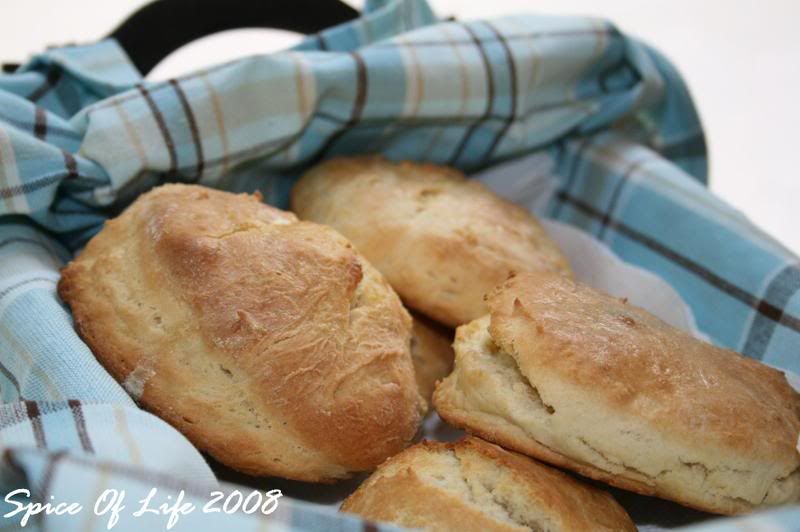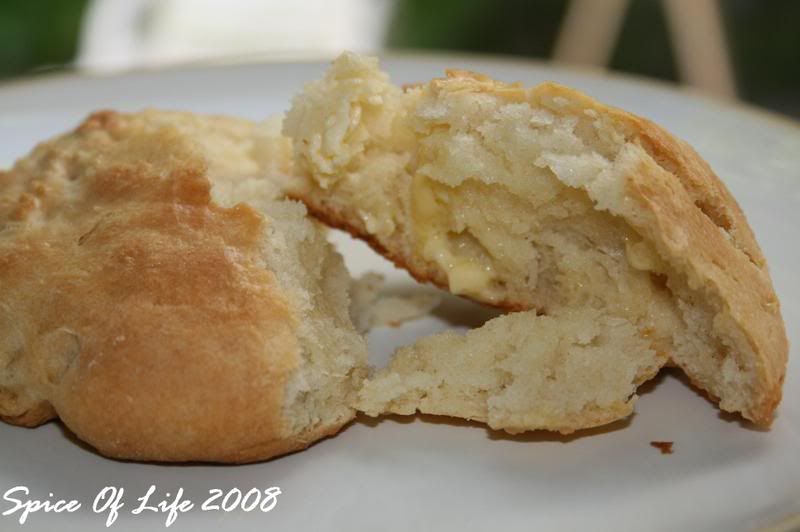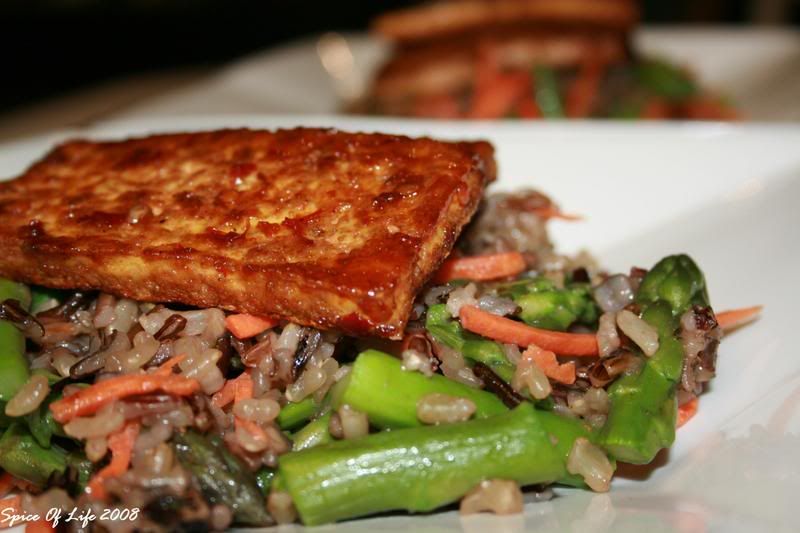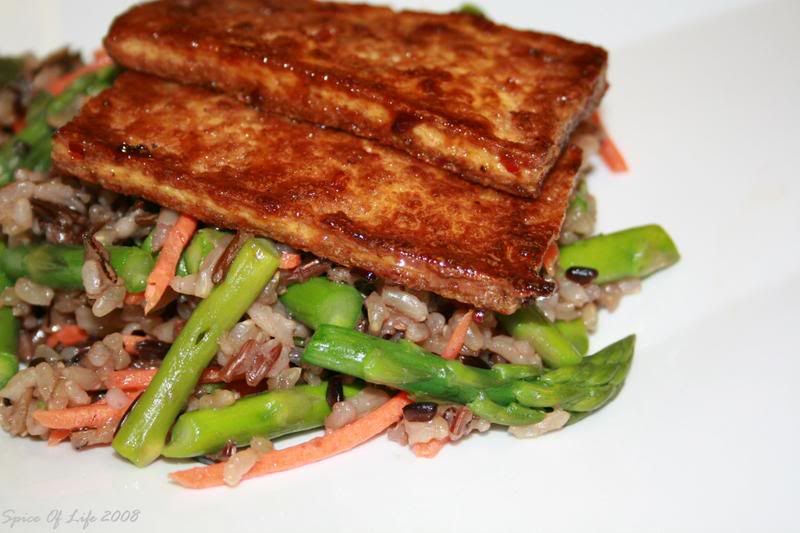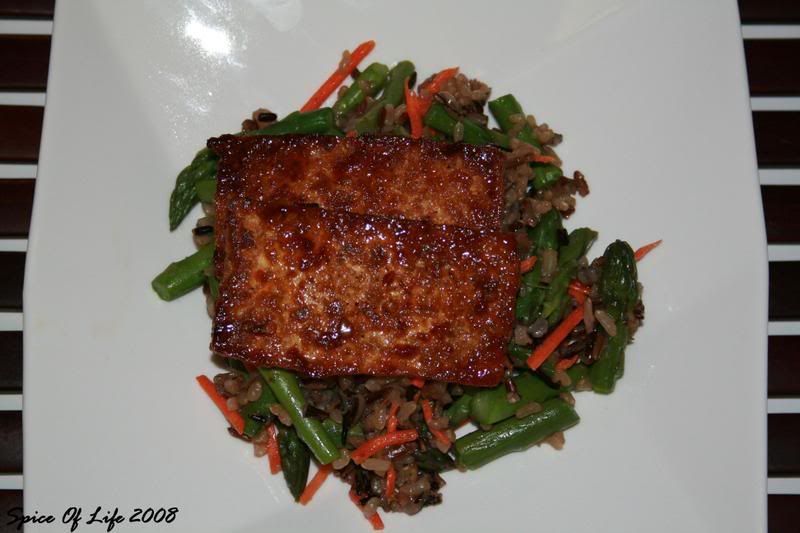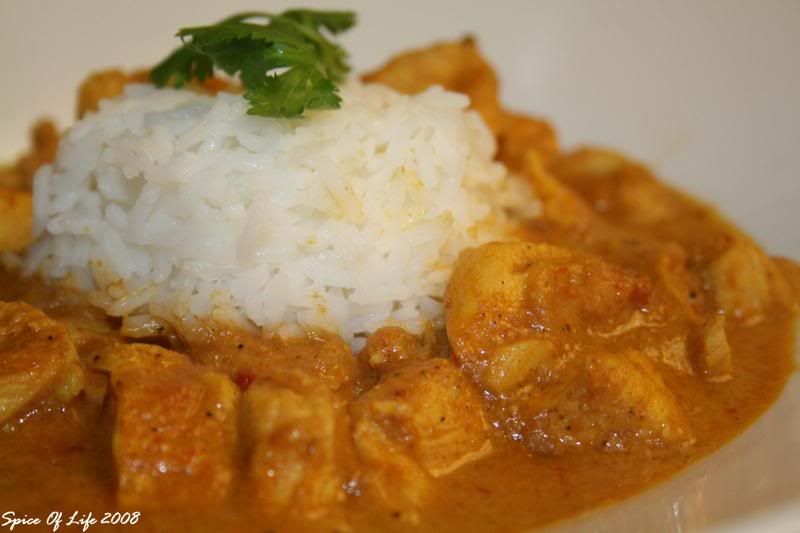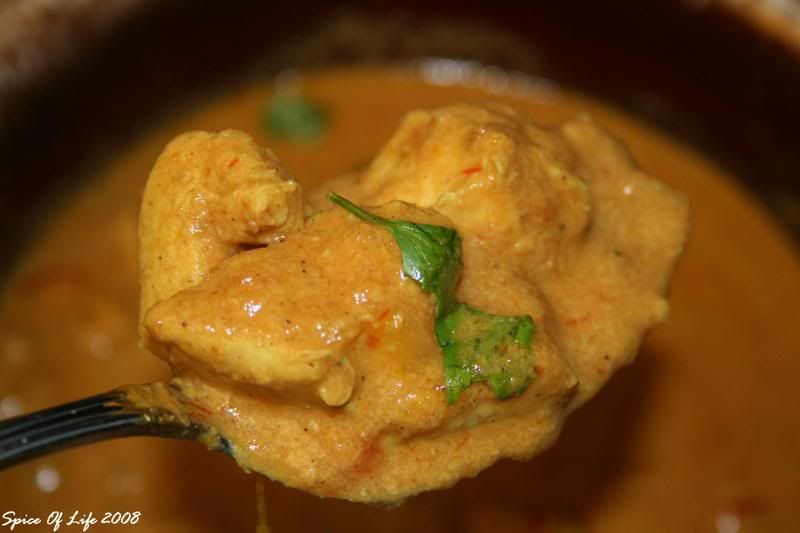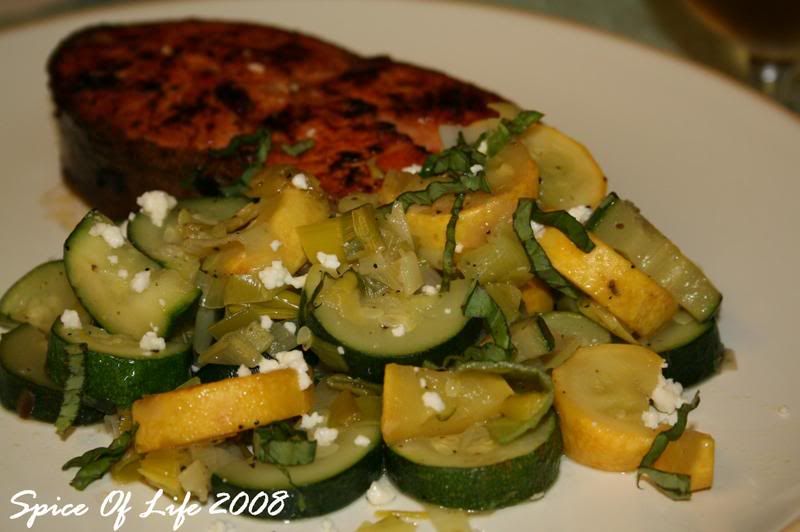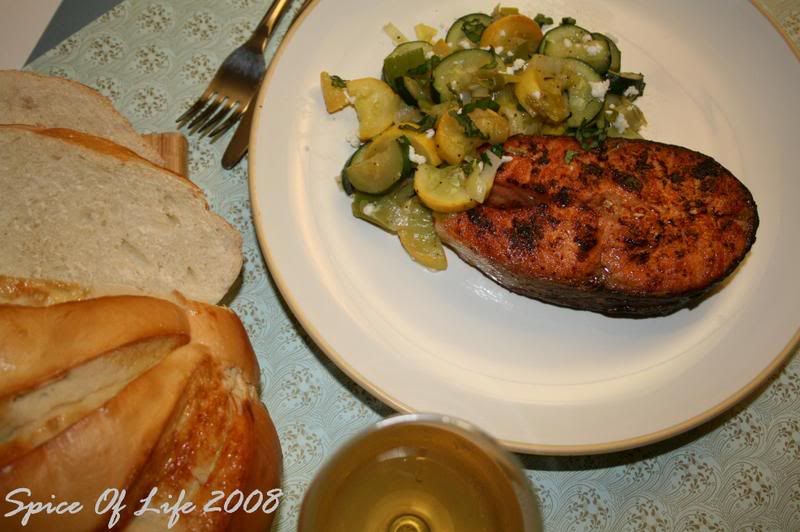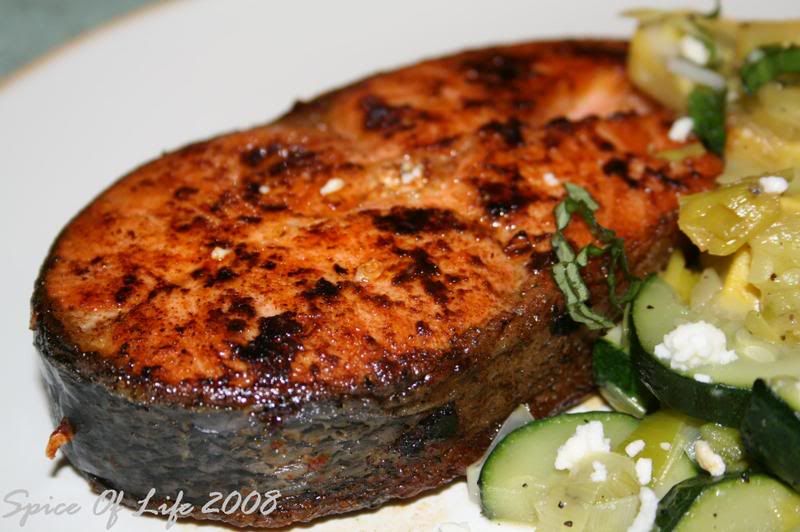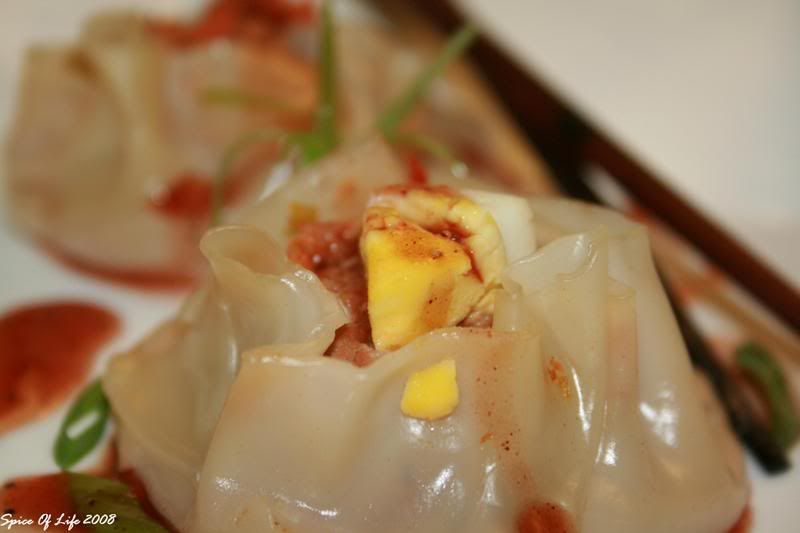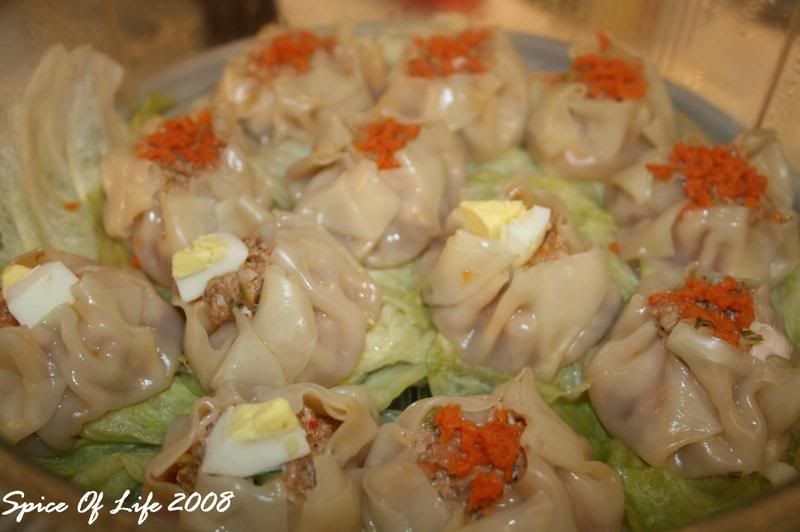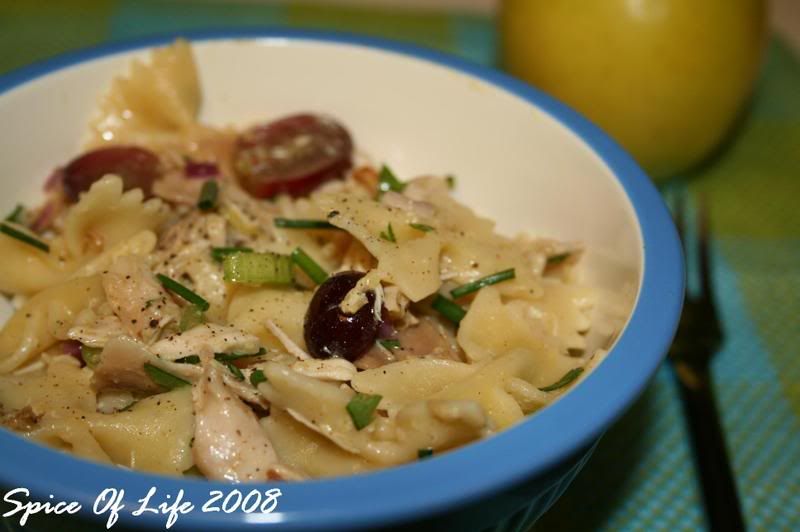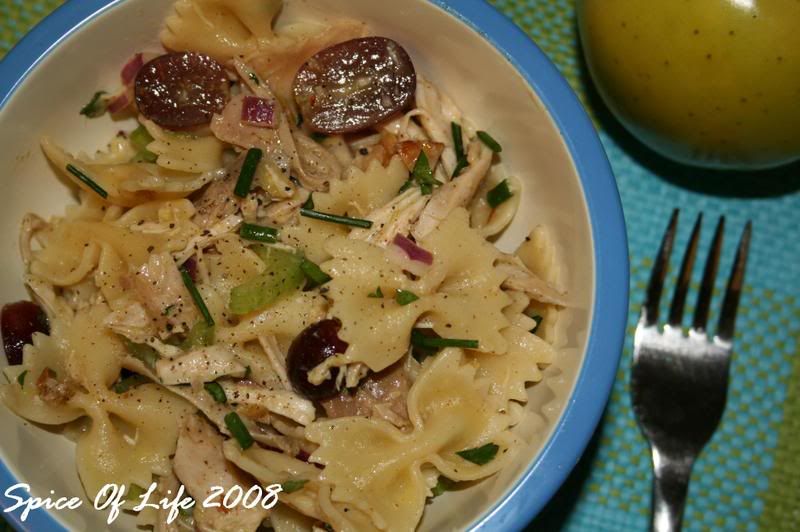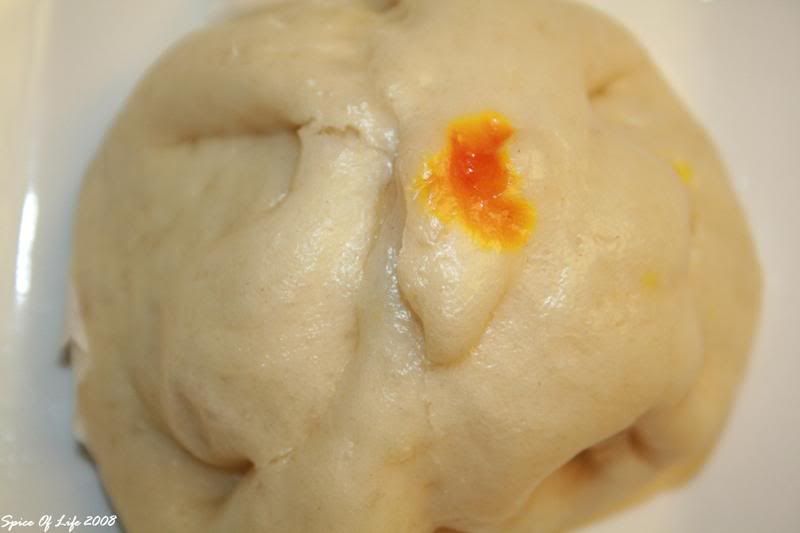
“Siopao or baozi” is a staple food in China that dates back to almost 1,800 years, about three kingdom periods (220-280) ago. According to history, some military soldiers caught a plague while traveling to South China. Zhuge Liang (181-234), the military strategist at that time, invented this food which is to be offered as a sacrifice to the gods for healing . They are buns shaped like human heads and are made of flour stuffed with meat filling. Interesting, huh?
Overtime, this food has become typical in Chinese households. They are usually served as dim sum, or those fingerfoods served with tea.
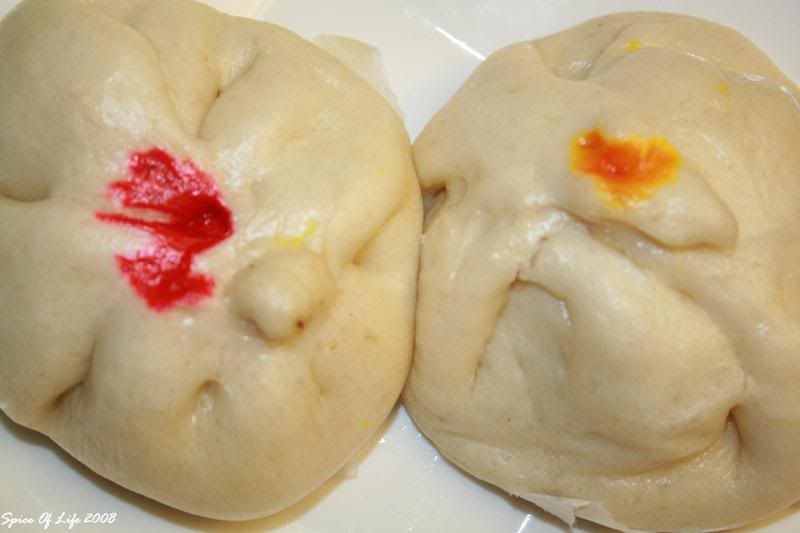
In the Philippines, siopao, along with mami (noodle-soup) and siomai (steamed dumpling) came from a tale of triumph by a Chinese immigrant named Ma Mon Luk. Ma Mon Luk is said to be a grade school teacher in China who was in love with a girl name Ng Shih. But the girl's family objected to their love, because Ma Mon Luk financially is not good enough. As a result, Ng Shih's father forbid her to marry Ma Mon Luk. Ng Shih had no choice but to obey her father regardless of her feelings for Ma Mon Luk.
Heartbroken, Ma Mon Luk decided to quit his teaching job and traveled to the Philippines in 1918. His purpose was to earn money, and be able to prove to Ng Shih's family that he was worthy of her.It was not an easy feat for Ma Mon Luk. He was jobless and broke when he got to the Philippines. But he decided to use what he had - his rich culture and knowlege and did what he knew best, prepared the food he grew up with and began peddling them in the streets. With determination and hardwork, Ma Mon Luk succeeded in introducing dishes that were to become an indelible part of the Filipino's history, culture and diet - the mami, siomai and siopao.
Today, these remain to be among Filipino's favorites. And they are found in many Chinese restaurants in the country, as well as in most little eateries that dot the busy streets of the Philippines.
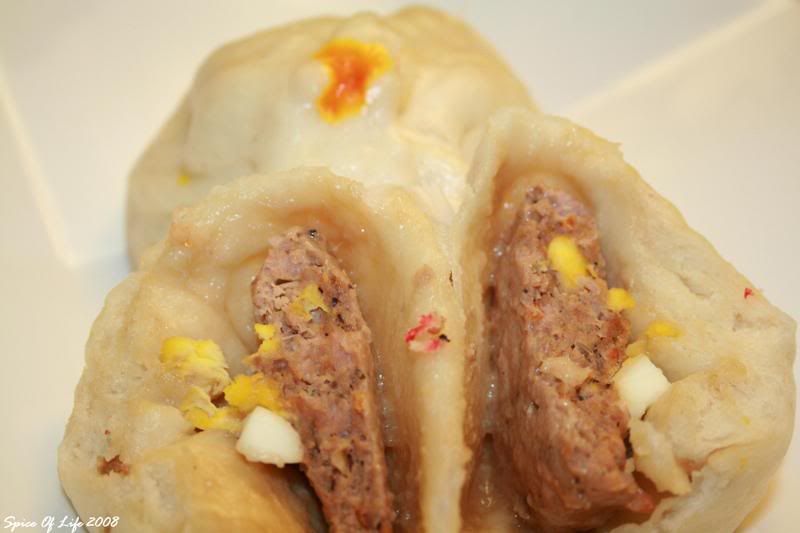
Bola-bola filled (meatball & egg) siopao
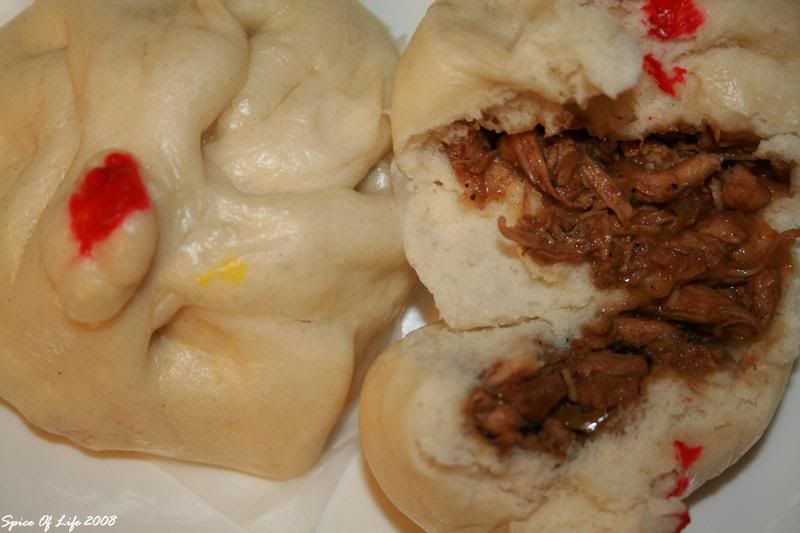 Chicken-filled siopao
Chicken-filled siopao
As for me, Siopao is still one of my favorite snack food. Whenever I go back to my homeland, I never fail to have some of them. I love the soft, slightly sweet, almost cake-like dough. To me, the dough is what makes this dish.
I can always buy them frozen from every Asian grocery here in the U.S., but there is nothing like a home-made, fresh-from-the-steamer-siopao goodness. It may be bit time consuming to make, but the result is very rewarding.
Here I made two of my favorite filling, the meatball and the chicken. But there's a whole lot of other fillings for Siopao. You can substitute the chicken with pork. Or you can use Tofu and add some vegetables for a vegetarian siopao (using carrots, green beans, bean sprouts,cabbage). Another one of my favorite filling is using mashed Mung beans.
The food coloring on top is nothing but for me to identify the filling within. Here, the yellow is for the meatballs, and red is for the chicken.
Hmmn.. I'm glad I took the time make this. Even my husband enjoyed it. Hope you will too.
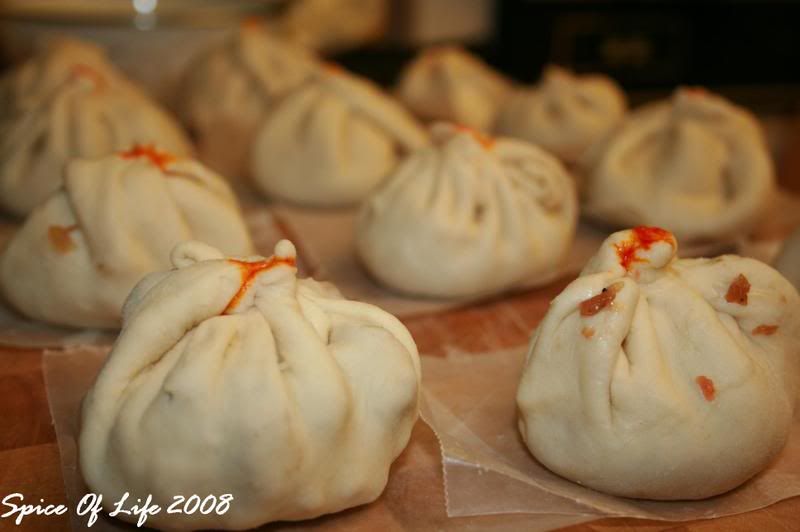
Siopao ready for steaming
SioPao
Dough:
1 cup warm water (about 100-110 degrees F)
3 tbsps sugar
1 package dry yeast (about 2-1/4 tsps)
3-1/4 cups all-purpose flour
3 tbsps canola oil
1/4 tsp salt
1-1/2 tsp baking powder
wax paper, cut into 2"x2" squares (about 12-20 pcs, depending on size of dough ball)
1. Combine warm water, sugar and yeast in a large bowl; let stand 5 minutes or until bubbly. DO NOT stir.
2. Spoon flour into the measuring cup and level with a knife. Add flour, oil and 1/4 tsp salt into yeast mixture. Mix well until soft dough forms.
3. Turn dough out into a floured surface. Knead until dough becomes smooth and elastic (about 10 minutes). Form into a ball.
4. Lightly oil/coat with cooking spray a large bowl. Place dough in the bowl, turning to coat top.
5. Cover with a clean, damp kitchen towel and let dough rise in a warm place (about 85 degrees F), for 2 hrs or until doubled in size. (Gently press two fingers into dough. If identation remains, dough has risen enough.)
6. Punch dough down; let rest 5 minutes. Turn dough out onto a clean surface; knead in baking powder. Let dough rest for 5 minutes.
7. Divide dough into two equal portions. Form one portion into a 10-inch log, and then cut into 5 equal pieces. Form each piece into a ball. Working with one dough ball at a time roll ball into a 4-5 inch circle. Make sure to cover remaining dough to keep them from drying.
8. Place about 1/4 cup of filling in the center of dough circle. Bring up sides to cover filling and meet on top.
9. Pinch and seal closed with a twist. Repeat procedure with rest of the dough.
Meatball Filling:
1 lb ground pork*
1 onion, finely chopped
1 tsp garlic, minced
1 med carrot, grated
3/4 tsp salt
1/2 tsp black pepper, freshly ground
2 eggs, beaten slightly
6 eggs, hard boiled, cooled and quartered
1. In a bowl, combine all ingredients except the ground meat and hardboiled eggs.
2. When mixed well, add ground pork to mixture. Mix by hand, only until all ingredients are thoroughly incorporated. Do not over work the meat.
3. Place about 1/4-cup of meat filling in the center of dough circle. Put quarter of the hard-boiled egg on top of the meat.
4. Proceed with #8 and #9 above.

Siopao in the steamer
Chicken Filling:
1 lb chicken breast, boneless & skinless*
1/2 tsp five-spice powder
1 c green onions, thinly sliced
3 tbsps hoisin sauce
2 tbsps rice vinegar
1 tbsp soy sauce
1-1/2 tsp honey
1 tsp fresh ginger, minced
1 tsp garlic, minced
pinch of salt (be careful as soy sauce is already salty)
2 tbsps vegetable oil
1. Place chicken breasts in a pot. Add enough water to cover. Add dash of salt and pepper. Bring to boil. when boiling, reduce heat and allow to simmer until chicken is tender. Remove from water and let chicken cool.
2. When chicken is cool enough to handle, take two forks and shred the chicken into strips. Set aside.
3. Heat oil in a skillet. Saute onion till tender, then add garlic. Then add the cooked, shredded chicken and the rest of the ingredients.
4. Stir to mix and simmer for 2 minutes, or until bubbly.
5. Remove from heat to cool.
6. When cooled, add 1/4 of chicken to the dough circle. Do #8 and #9 procedures above under Dough.
Steaming:
1. Arrange bun in your steamer, 1 inch apart. Place wax paper on the bottom of each bun, seam side down (with me, I prefer to have the seam up, as it looks prettier).
2.If you are doing 2 or more fillings, I suggest that you color top with a food coloring to identify the filling in your buns.
3. If you are using a 2-tier bamboo steamer, stack tiers and cover with lid.
4. Add water to a large skillet to a depth of 1 inch; bring to a boil over medium high heat. Place steamer in pan; steam for 15* minutes until dough is puffed and set. Cool 10 minutes before serving.
*NOTE:
For meatball filling, steam 25 minutes since the meat is not pre-cooked.
If you are doing both fillings like I did, reduce the amount of the filling to half. Or, double the amount of your dough. Also, I added a 1/4 tsp vinegar to the steaming water. Vinegar has a bleaching effect on the dough when steaming, so you'll get whiter buns. For a gluten-free version, you may substitute the all-purpose flour with rice flour.
